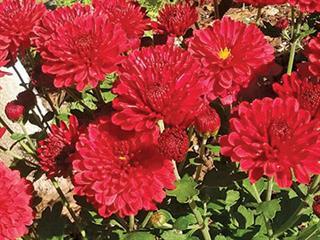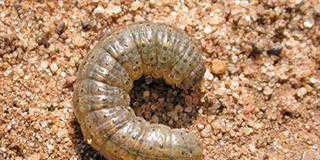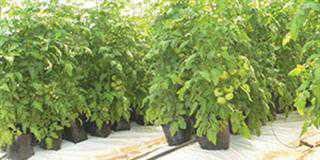
About 200 years ago in Asia, it was noticed for the first time that some insects would not visit certain plants. Those that did died shortly afterwards. One group of such plants was the chrysanthemums (Chrysanthemum or Tanacetum), a group of Old World plants, now cultivated as ornamentals.
Human ingenuity being what it is, someone got the idea to pick and dry the flowerheads, crush them into a powder and sprinkle it on other plants. It worked; insects visiting these plants died. And so insecticides were born. The chemical in the crushed flower head responsible for its insecticidal property is pyrethrum, which contains the compounds pyrethrin and cinerin. In the Middle East the powder was sold as ‘Persian powder’ and was used to control lice.
The most economically important chrysanthemum for the extraction of pyrethrum is the Dalmatian chrysanthemum (Tanacetum cinerariifolium). Pyrethrum is extracted from the flowers with the aid of solvents and sold in liquid or powder form. Just over 10 years ago, Kenya was the largest producer of pyrethrum, accounting for 90% (6 000t) of the world’s demand. It now faces stiff competition from Tanzania and Australia.
How it works
Pyrethrum is a relatively environmentally friendly, biodegradable organic insecticide, which breaks down quickly when exposed to sunlight. It is less toxic to mammals and birds than many synthetic insecticides. A nerve inhibitor, pyrethrum kills the insect by targeting its nervous system. In a less concentrated form, it can also act as an insect repellent. Outdoor clothing and mosquito nets are sometimes treated with it.

A botanical insecticide, pyrethrum breaks down rapidly after application and is considered
safe for crops and fruit trees.
Usage
Pyrethrum is one of many botanical insecticides that can be made more effective by mixing it with similar agents such as Neem oil or insecticidal soap while still retaining its low environmental impact properties. These botanicals broaden the scope of pest species that pyrethrum can be used against. Such combinations have been shown to be effective against aphid infestation, spider mite, scale insects, thrips, and many species of leaf-eating insects.
Apart from the fact that pyrethrum has a low toxicity level, it breaks down rapidly after application. For this reason, it is considered safe for use on fruit trees and crops right up to harvest time.
Beware the toxicity!
Although a natural insecticide, pyrethrum does have a number of drawbacks. It is toxic to bees, so should not be used during pollination time. It should also not be used near water or enclosed ponds, as it is toxic to fish. Importantly, it should not be confused with permethrin. The latter is a man-made insecticide, the chemical composition of which is based on pyrethrum. But permethrin also contains a synthetic chemical called piperonyl butoxide, so is less environmentally friendly.
Make your own
You can easily make pyrethrum in your kitchen. All you need are some mature chrysanthemum flower heads – the best species are Chrysanthemum cinerariaefolium or Tanacetum cinerariifolium. Dry the flower heads and transfer them to a dark, airtight container.
When required, simply grind the flower heads into a fine dust and sprinkle this onto the pest-laden plants. If you wish to use pyrethrum as a spray, mix 50g powder with 10l of water. This dilution is suitable for most of the small pests, such as aphids, spider mites and so forth.
Although pyrethrum is a natural insecticide, wear protective gloves while making it, and don a mask to avoid inhaling it.













